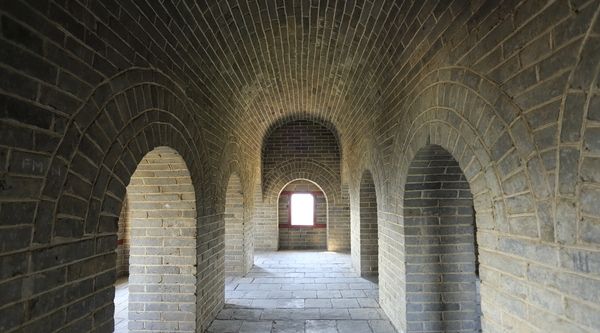
The internal structure of the Great Wall varies depending on the section and the time period of its construction. Generally, the Great Wall consists of several key components:
- Core Structure: The main body of the Great Wall is typically made of rammed earth, stone, or brick. The core is usually filled with soil, rubble, or other materials to provide stability and strength.
- Wall Base: The foundation of the Great Wall is built on a solid base, often using large stones or bricks to ensure stability. The width of the base varies but is generally wide enough to support the weight of the wall and any structures on top.
- Parapet Wall: Along the top of the Great Wall, there is a parapet wall with battlements (crenellations) that provided protection for soldiers while allowing them to shoot arrows or fire weapons at enemies.
- Watchtowers: At regular intervals along the Great Wall, watchtowers were constructed. These towers served as lookouts, signal stations, and barracks for soldiers. They are typically square or rectangular in shape and have multiple floors.
5.Beacon Towers: These are tall structures used for sending signals over long distances. They were often built on high ground and could be used to send smoke signals during the day or light signals at night.
6.Gates and Passes: The Great Wall has numerous gates and passes that served as controlled entry and exit points. These areas were heavily fortified and often had multiple defensive structures.

7.Internal Pathways: The top of the Great Wall has a flat pathway that allowed soldiers to patrol and move quickly along the wall. This pathway is often wide enough for horses or carts to pass.

8.Drainage System: To prevent water damage, the Great Wall has a drainage system that includes channels and holes to allow rainwater to flow away from the structure.
The specific design and features of these components can vary significantly between different sections of the Great Wall due to differences in terrain, materials available, and the specific defensive needs of each area. Some sections of the Great Wall are more intact and better preserved than others, allowing visitors to see these internal structures more clearly.